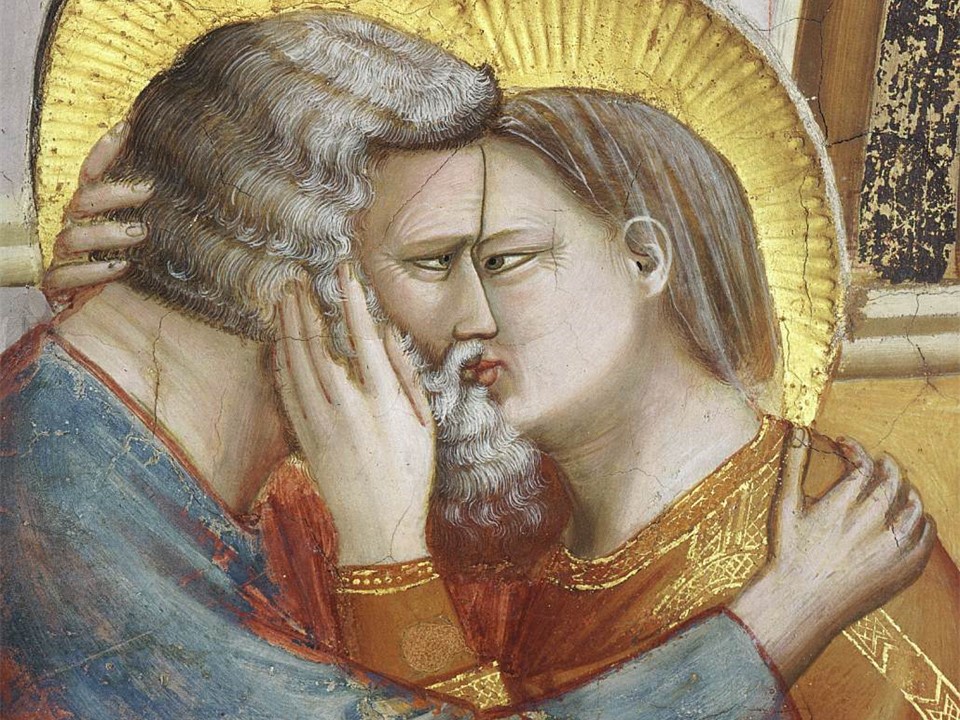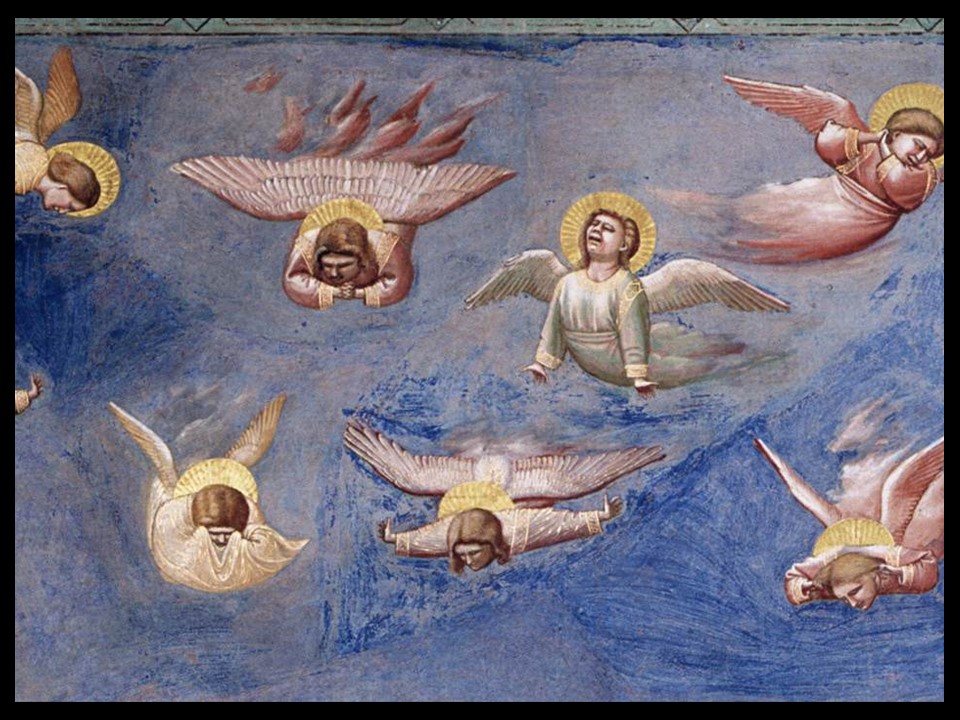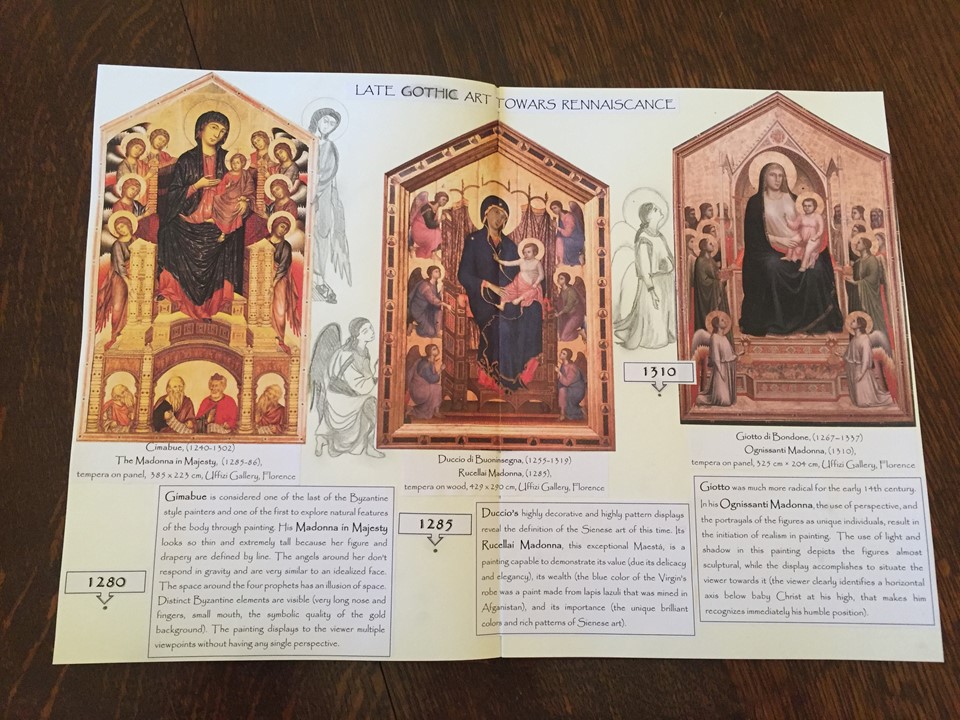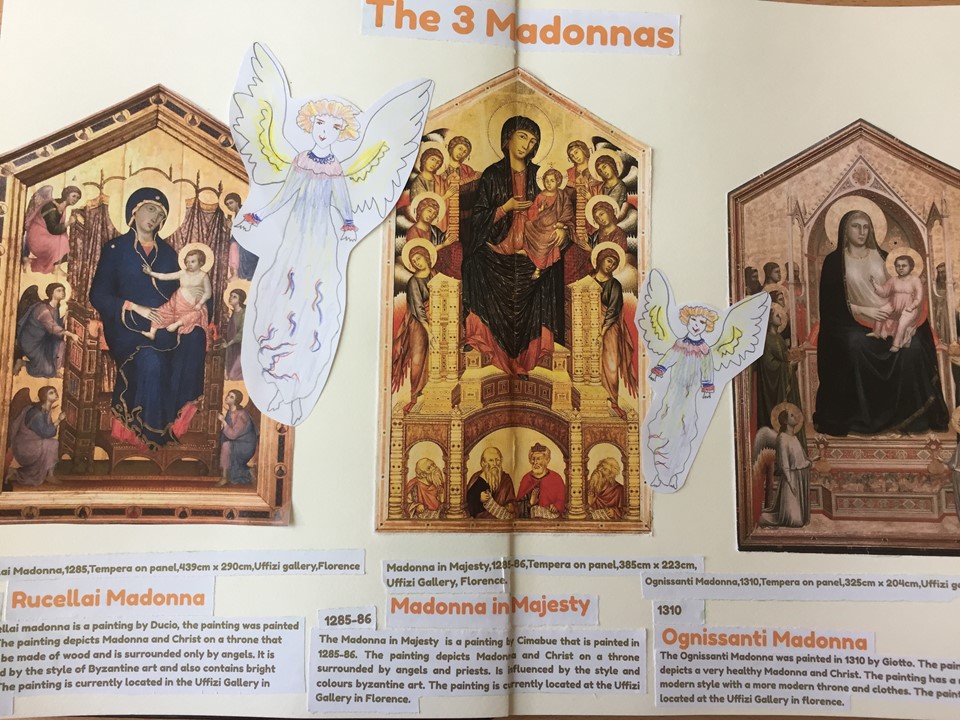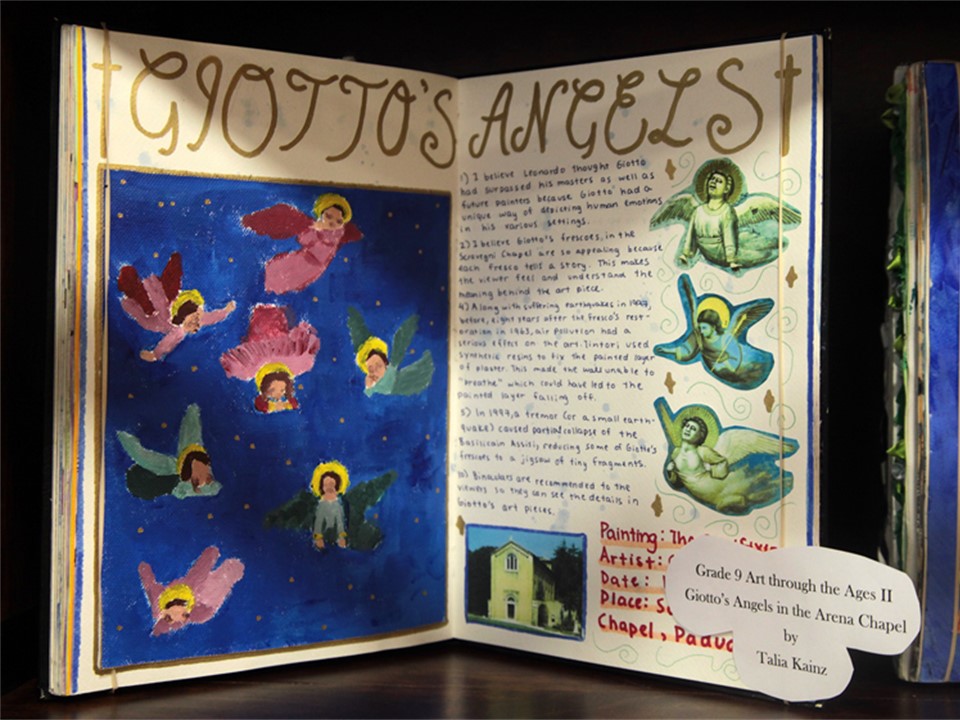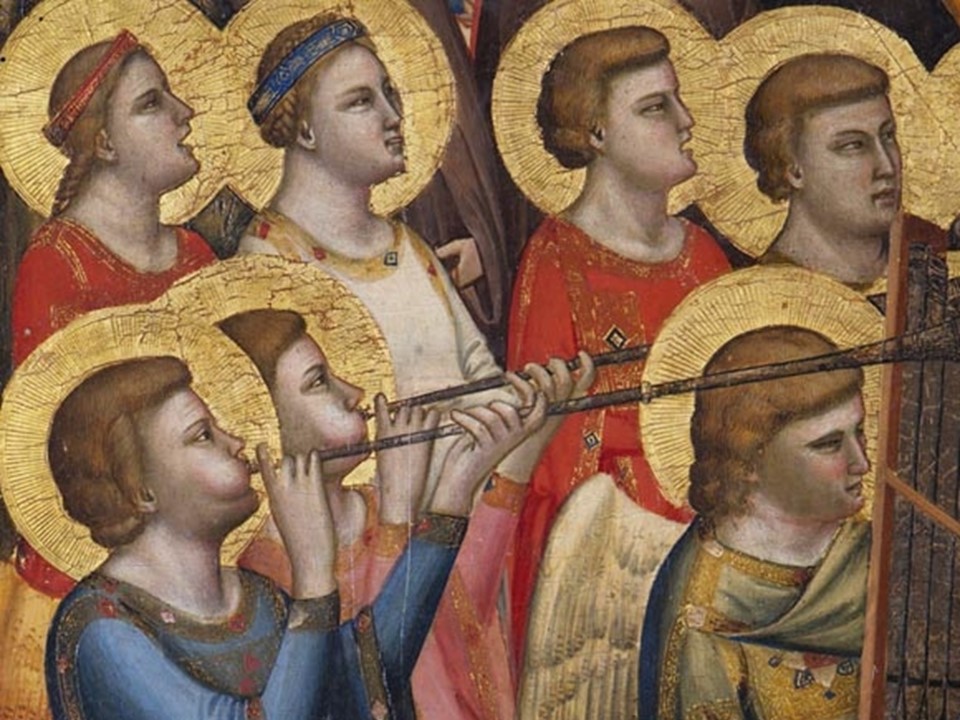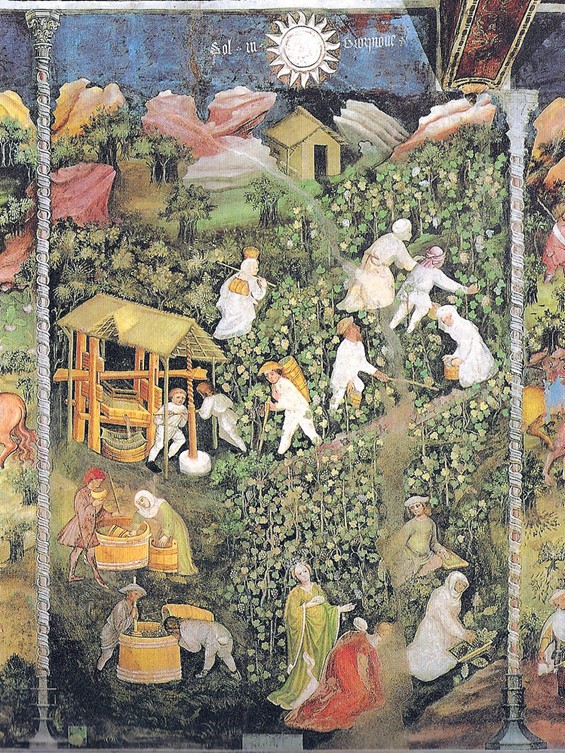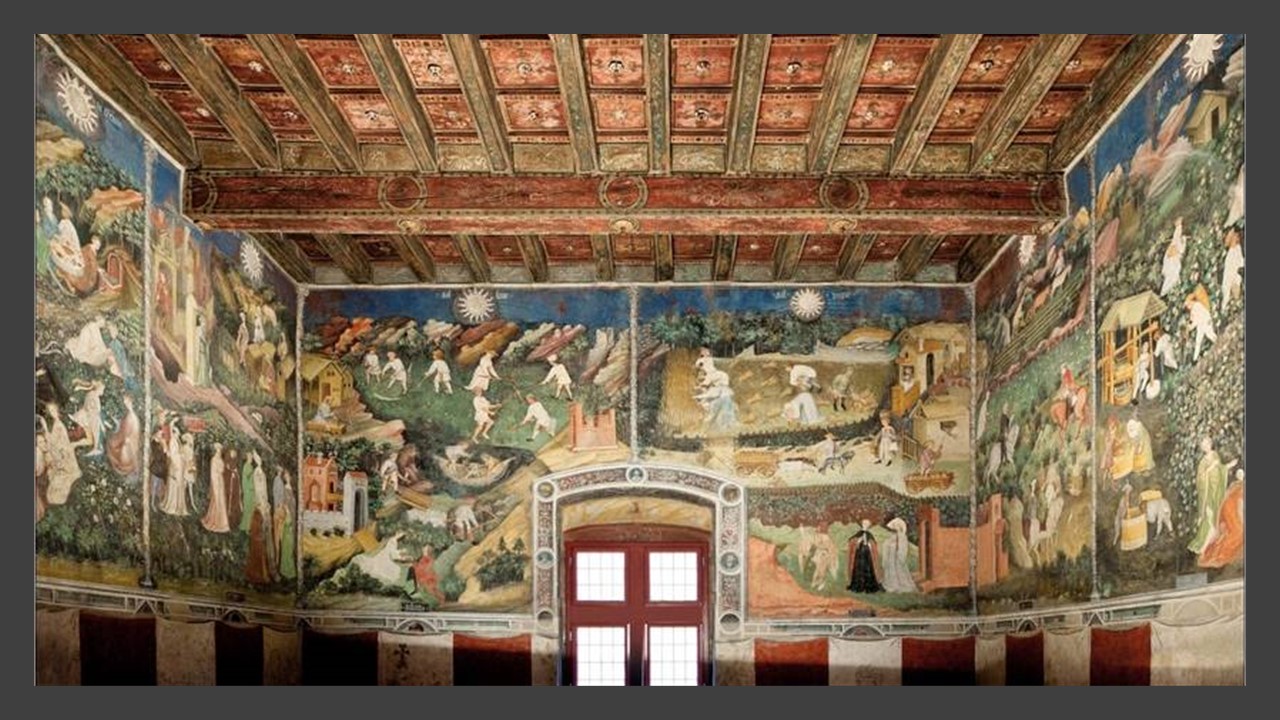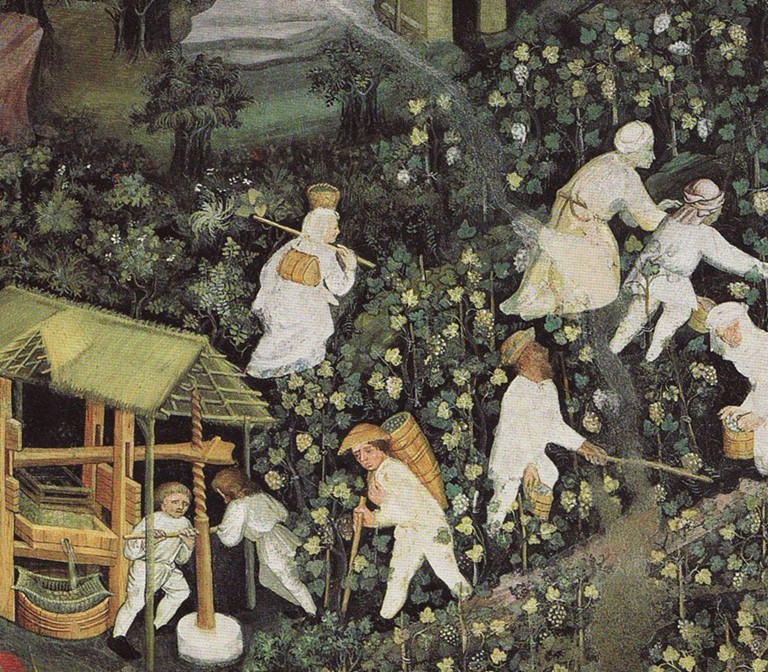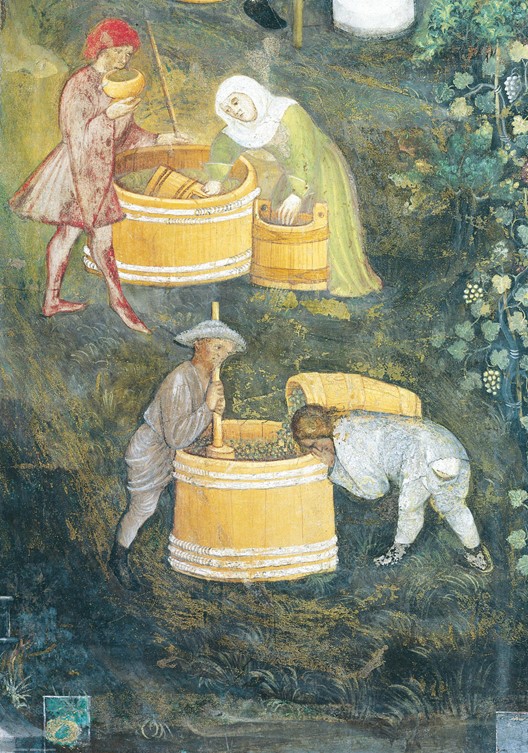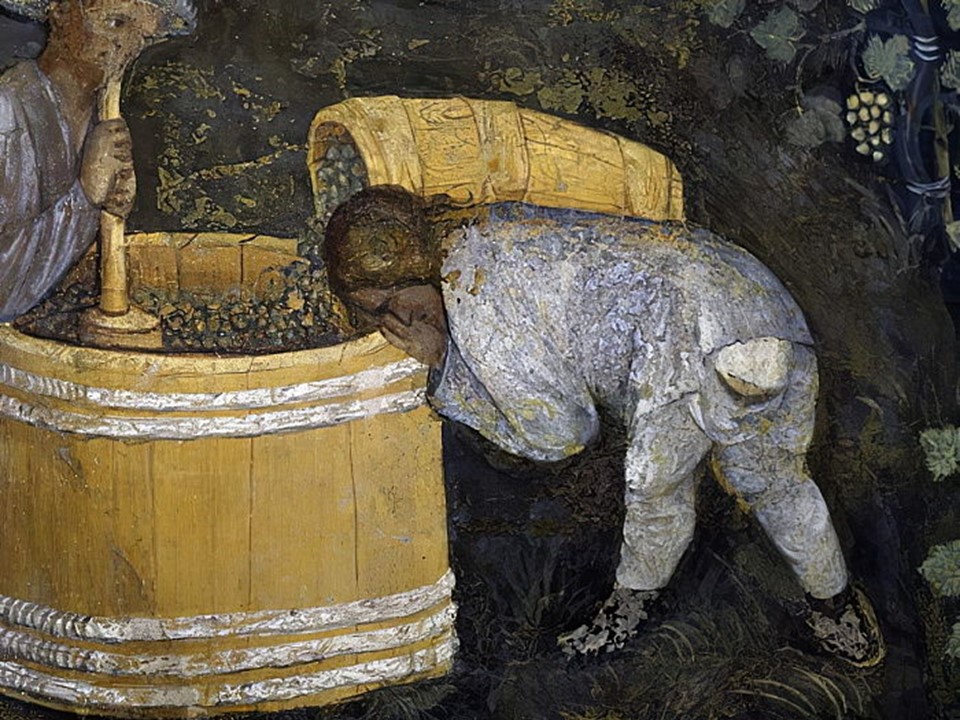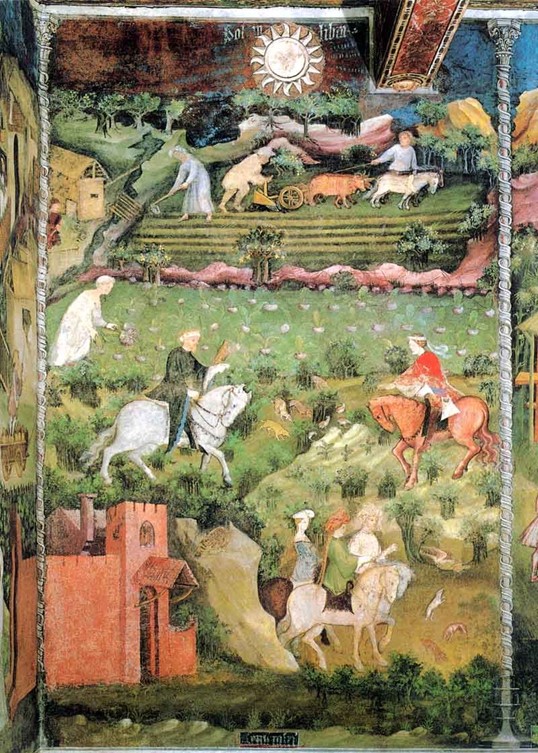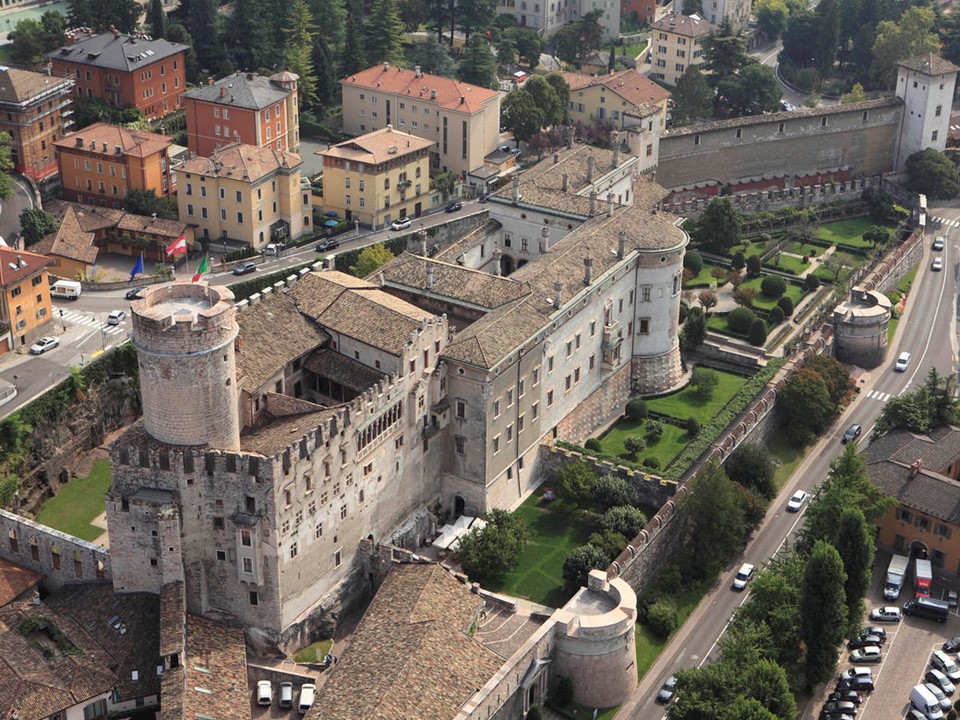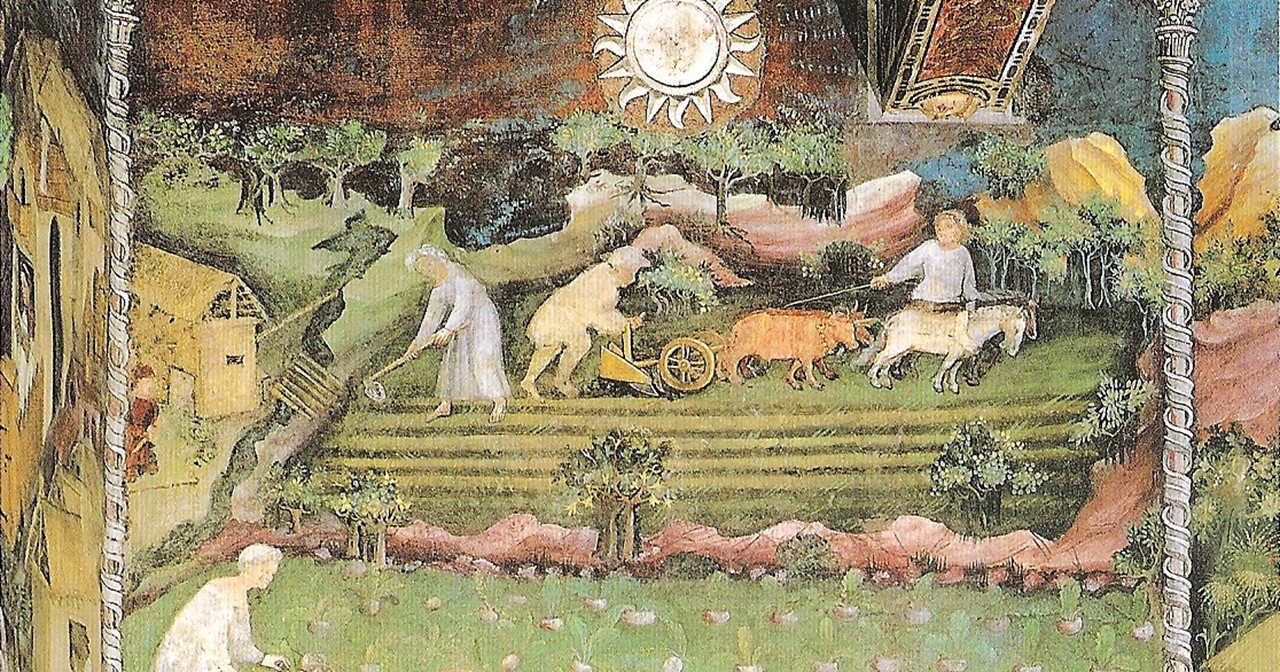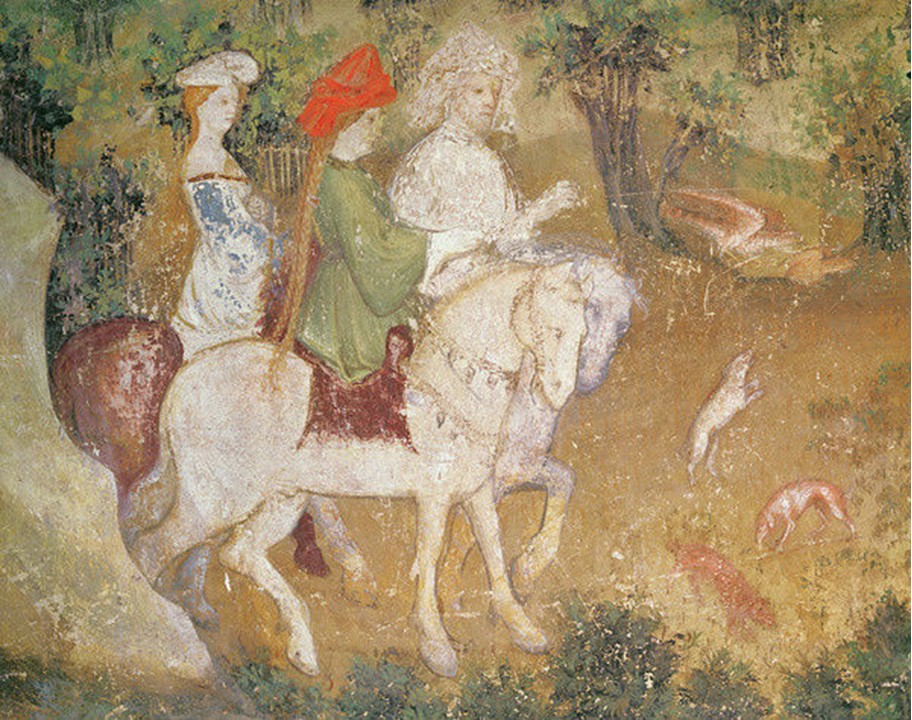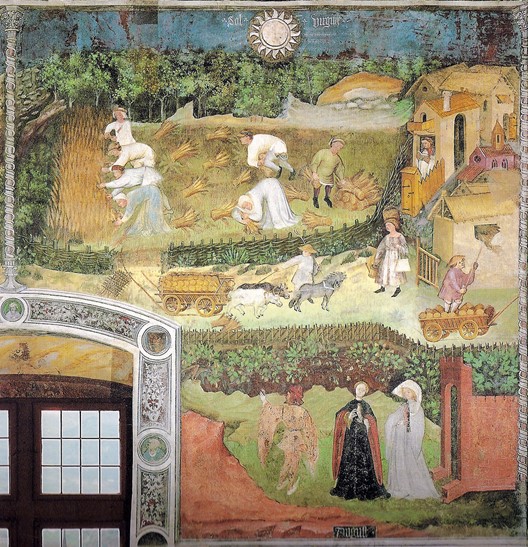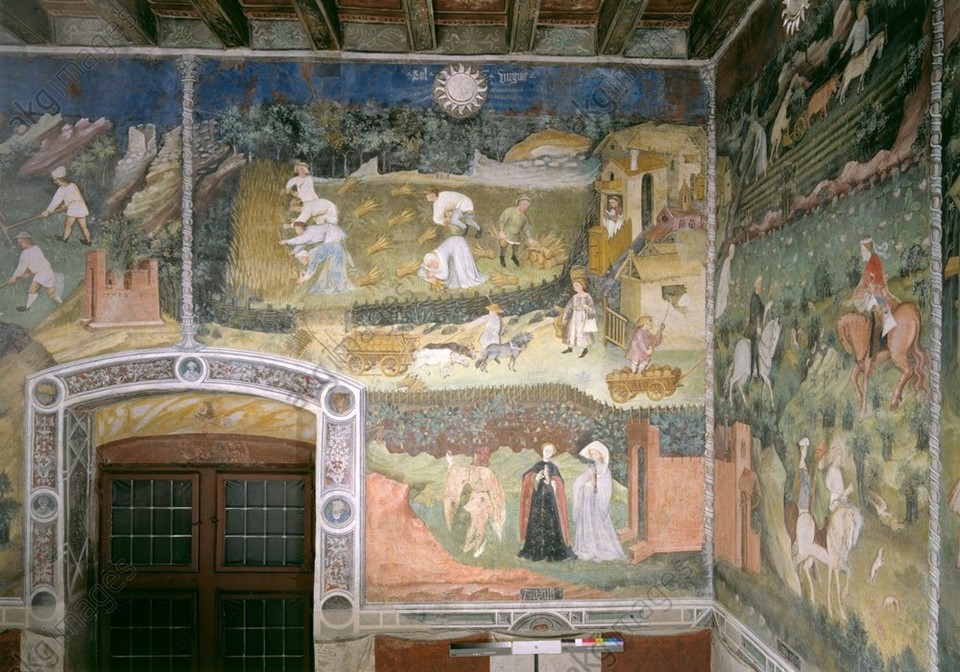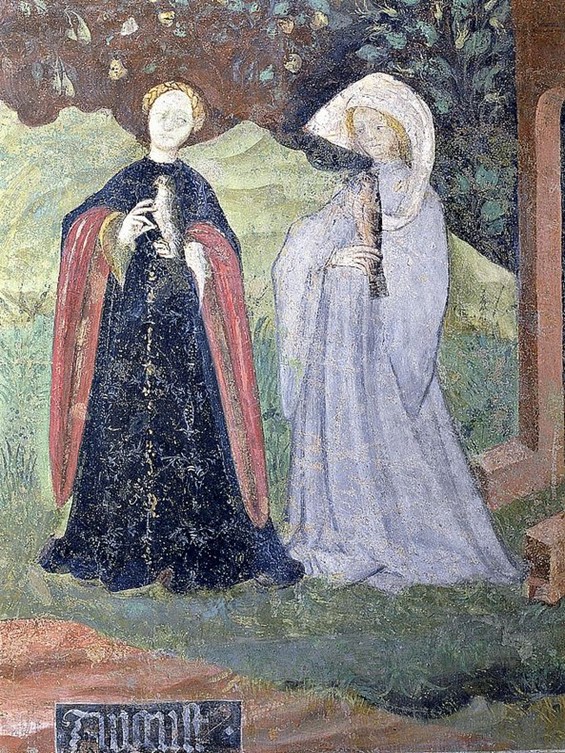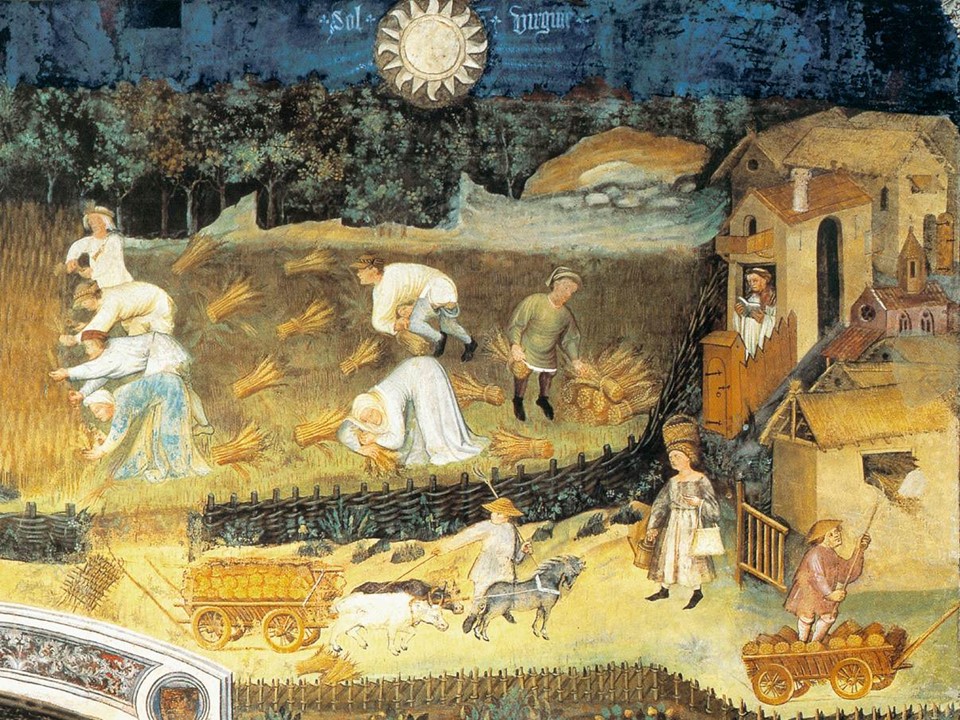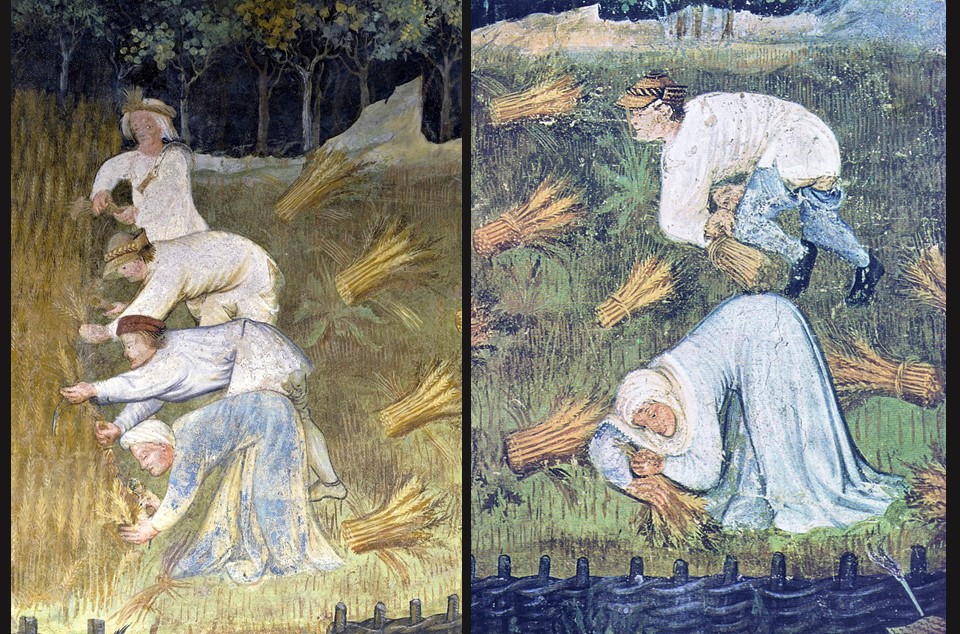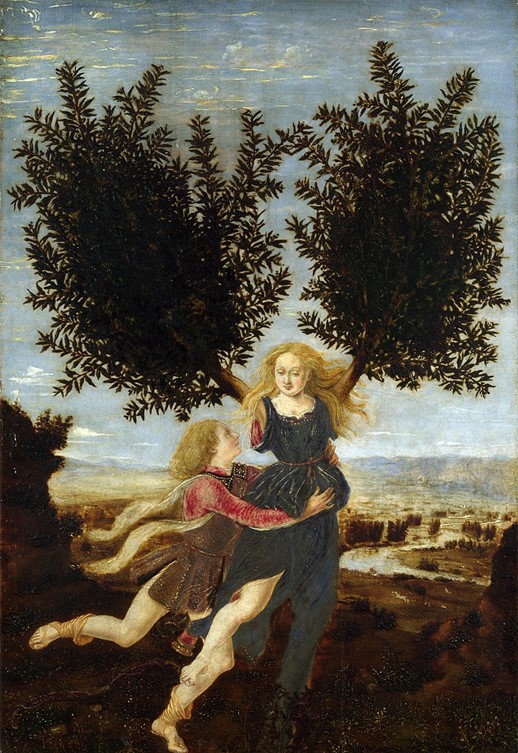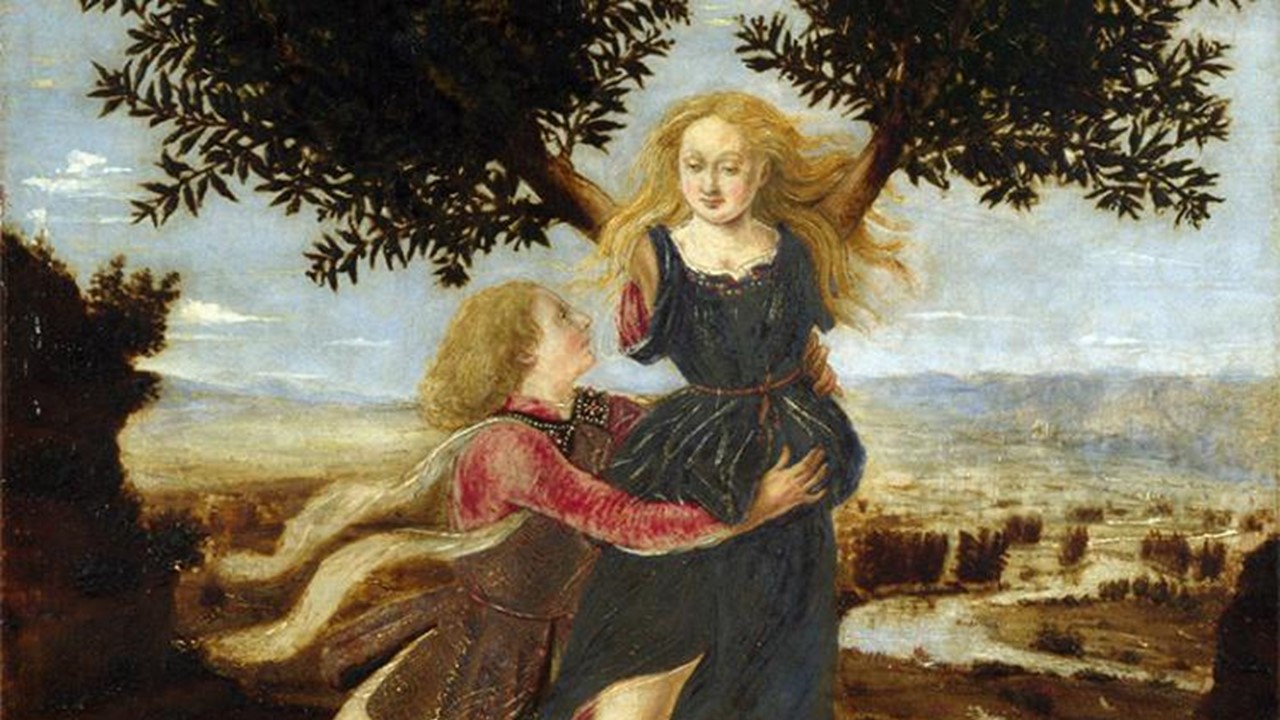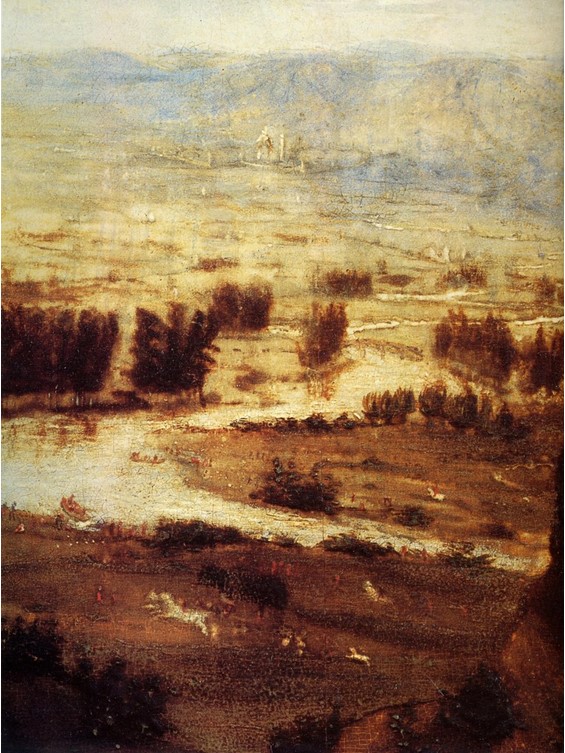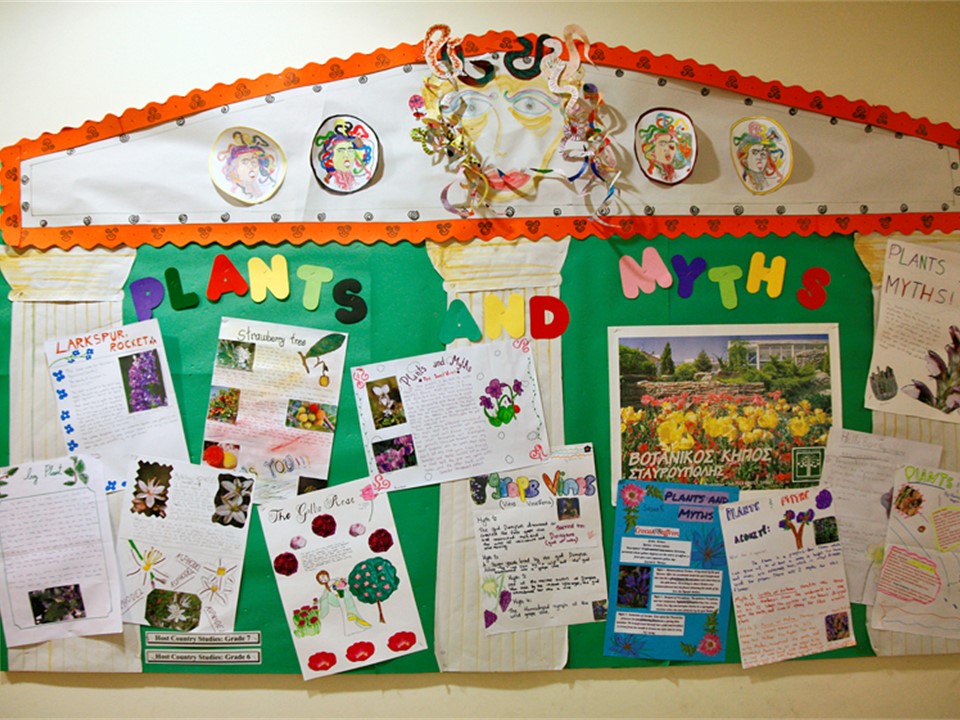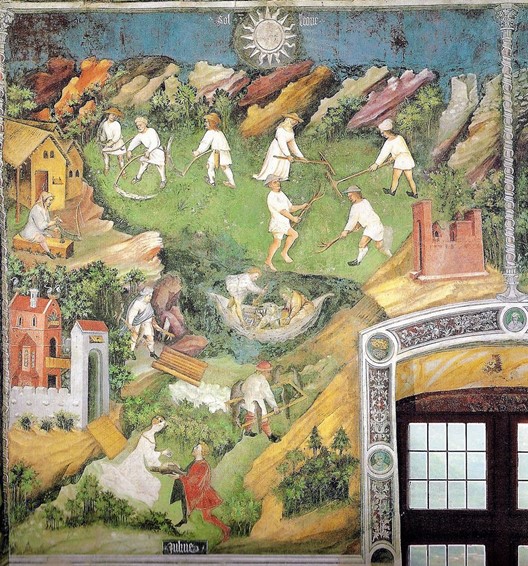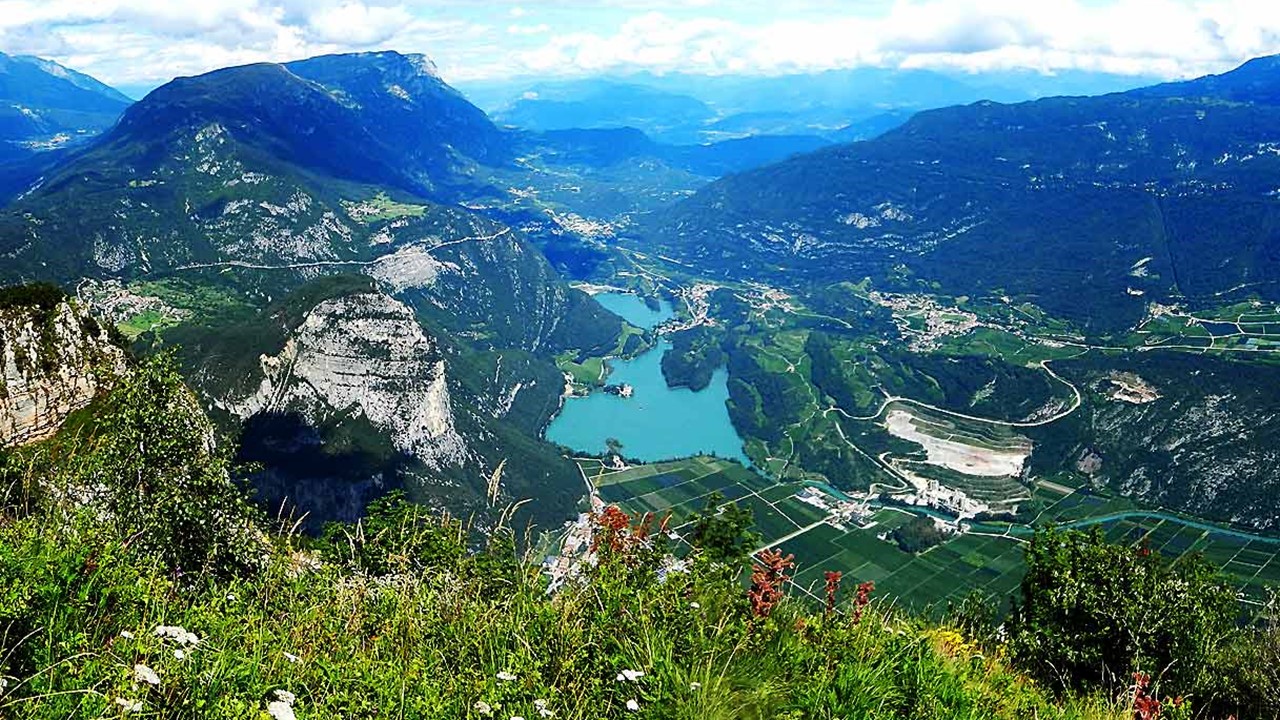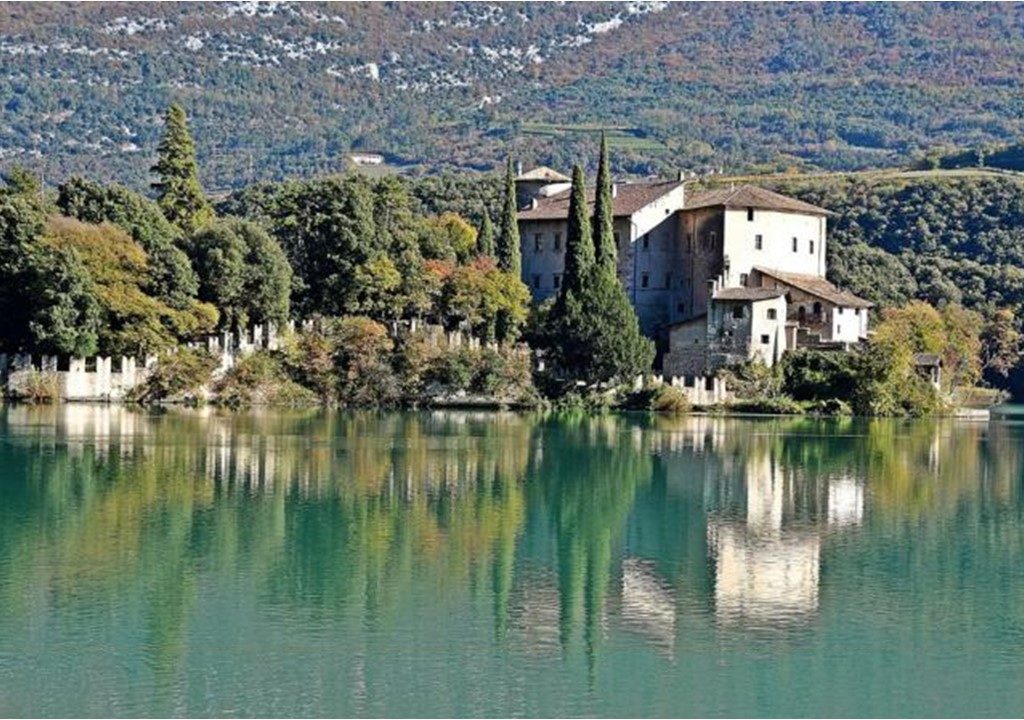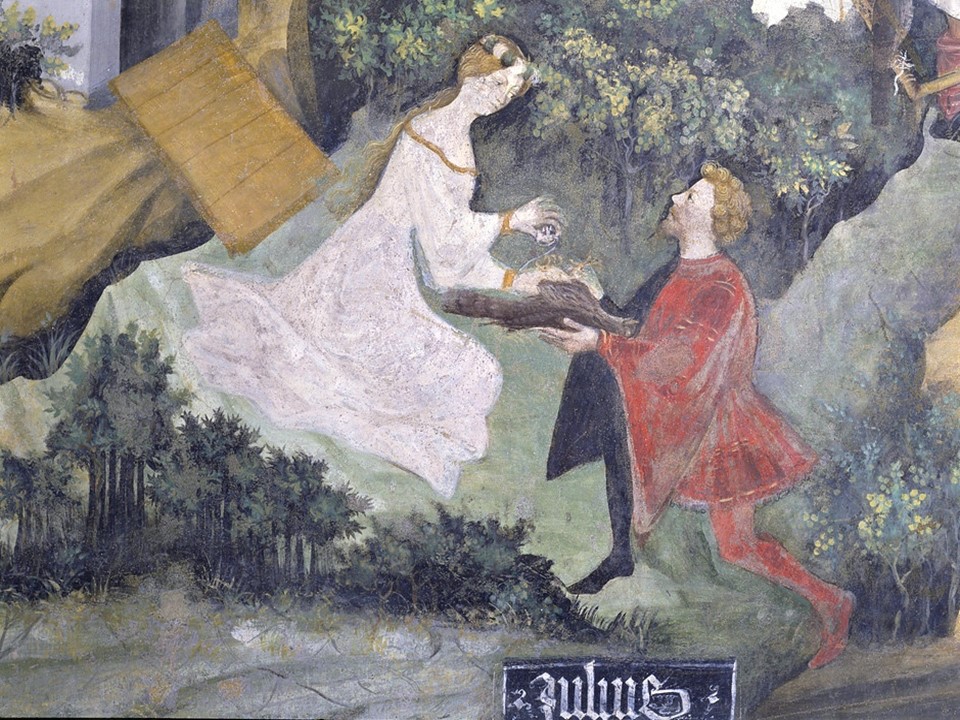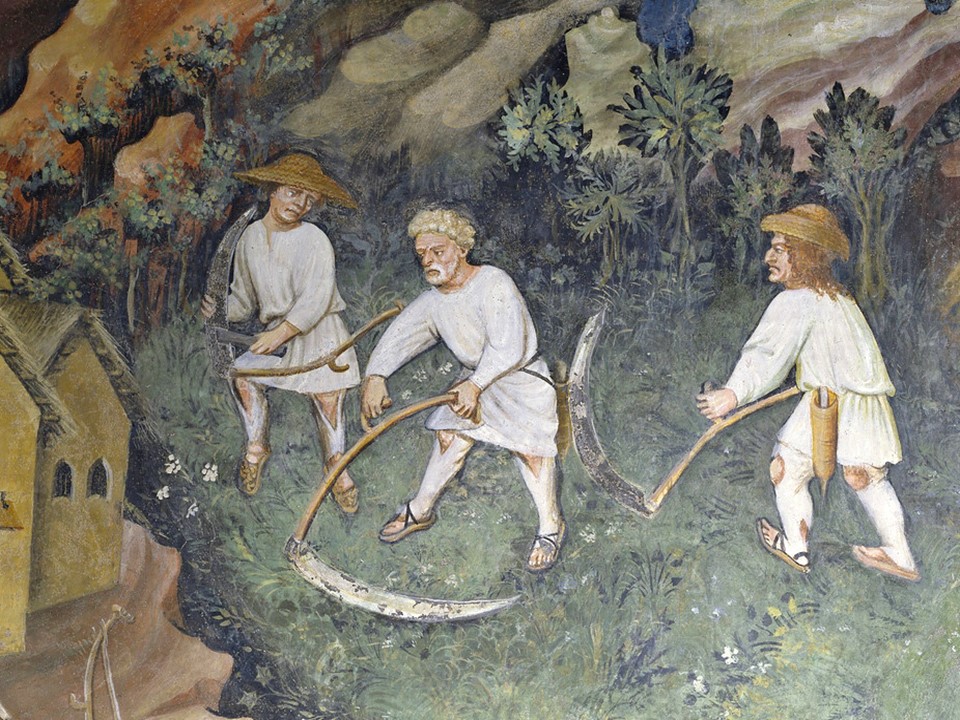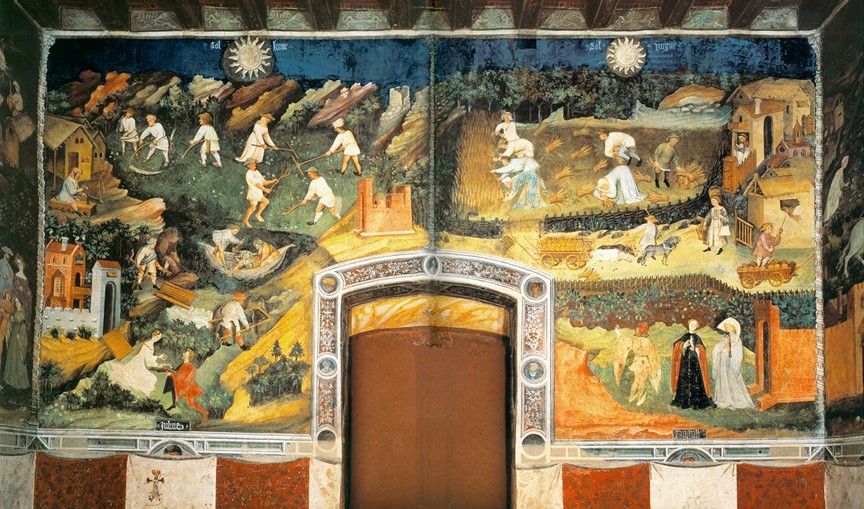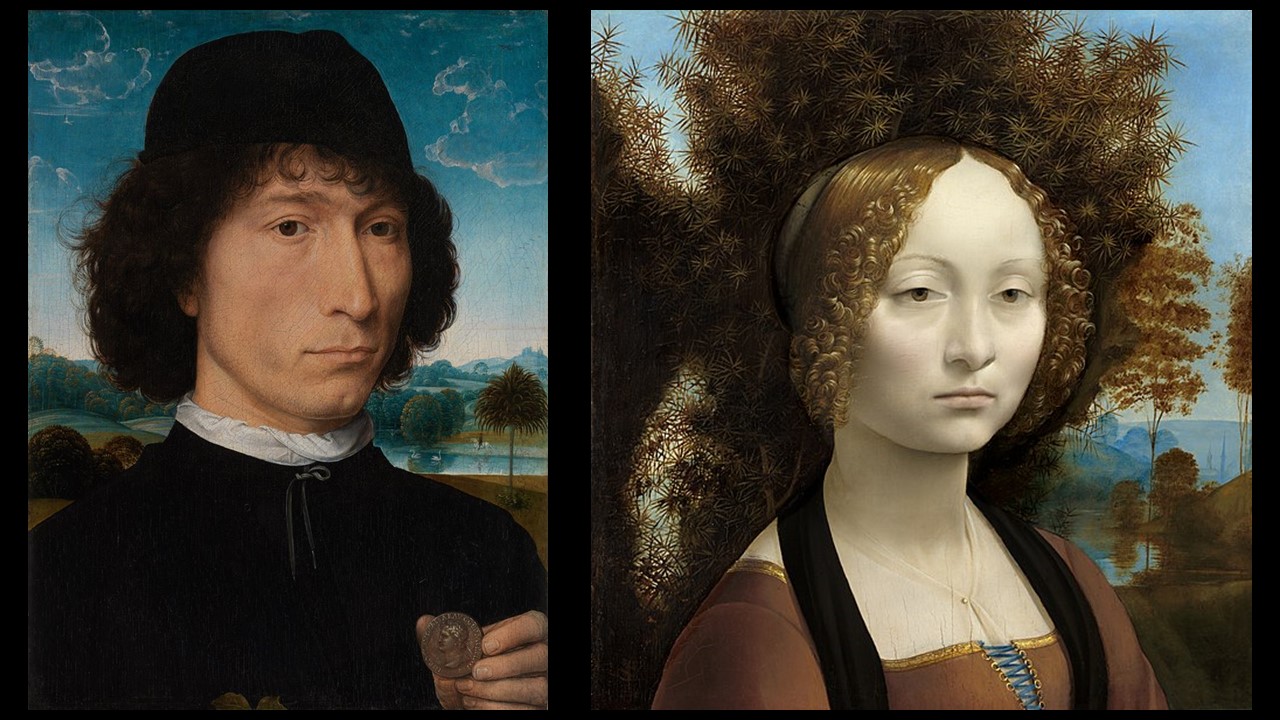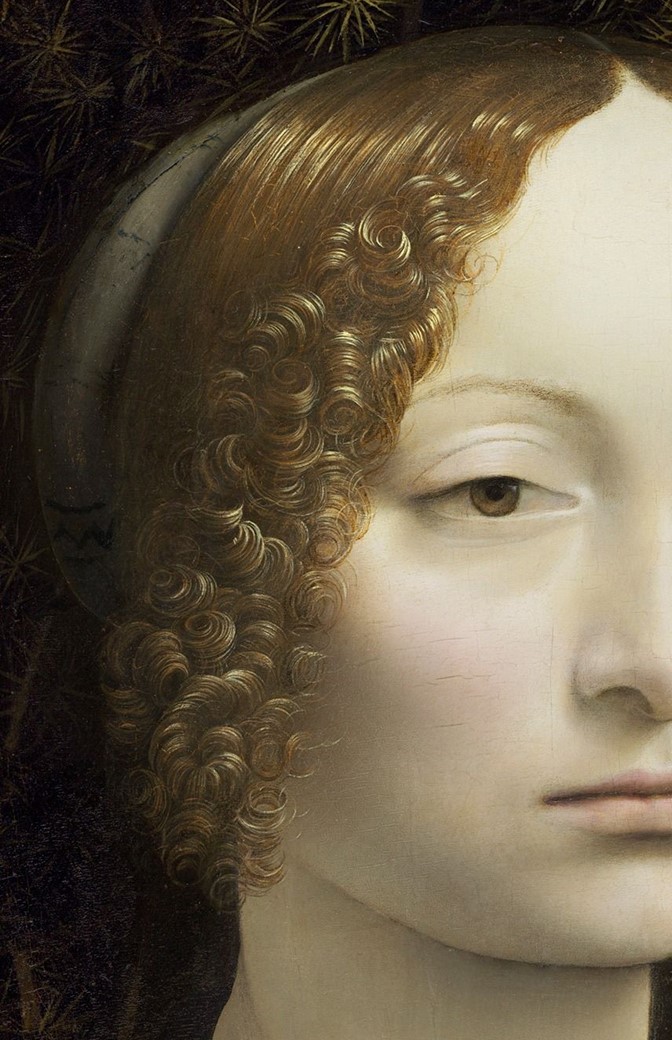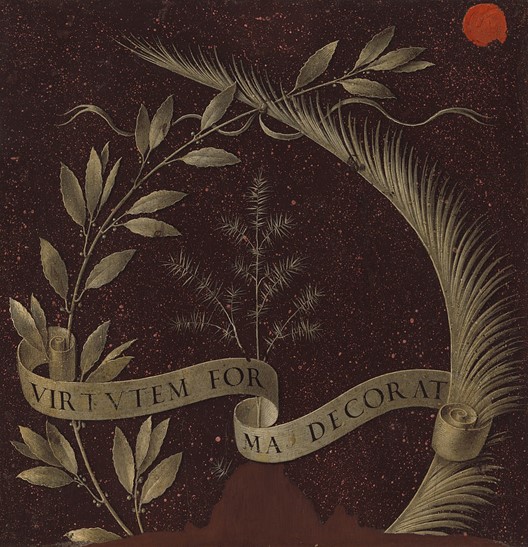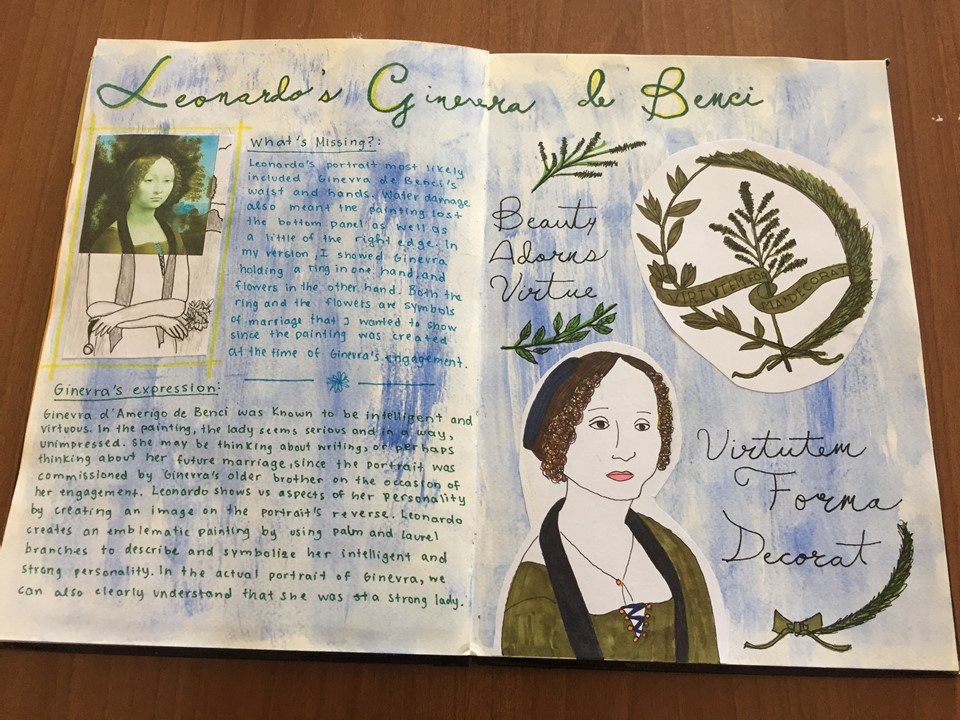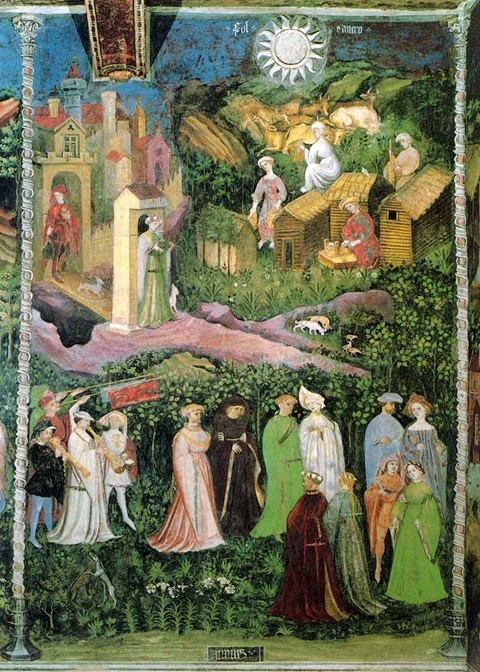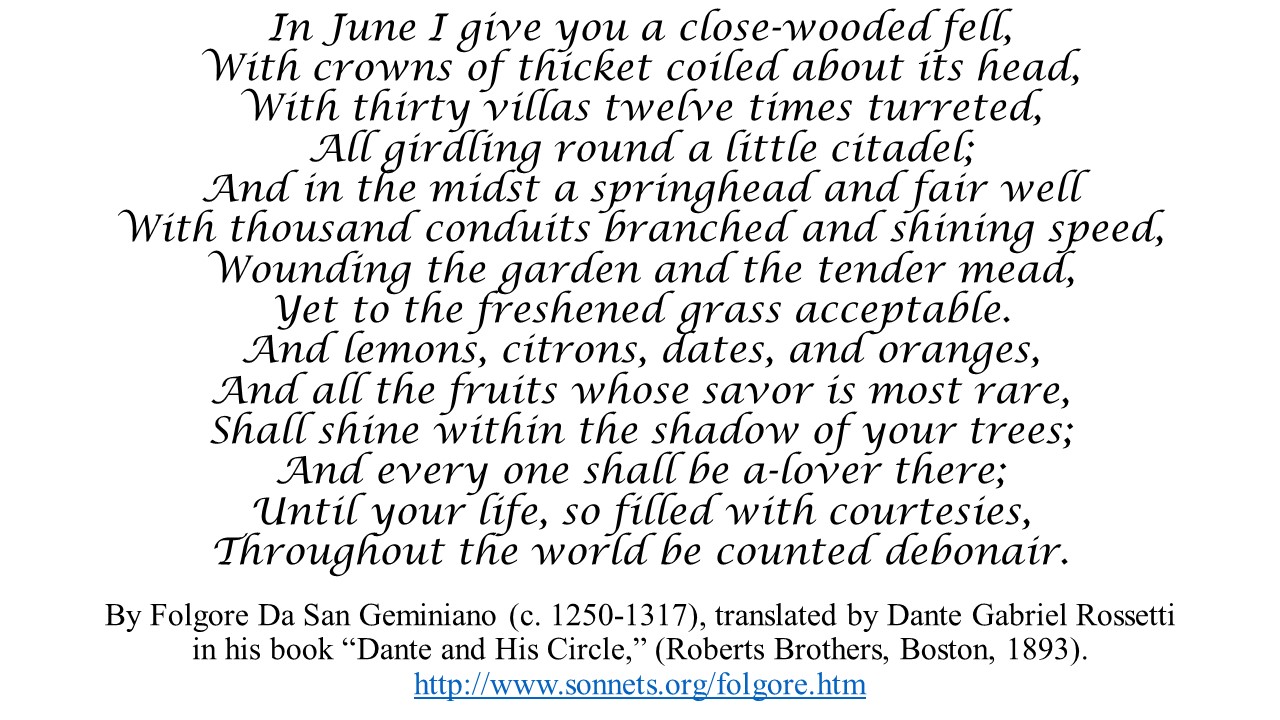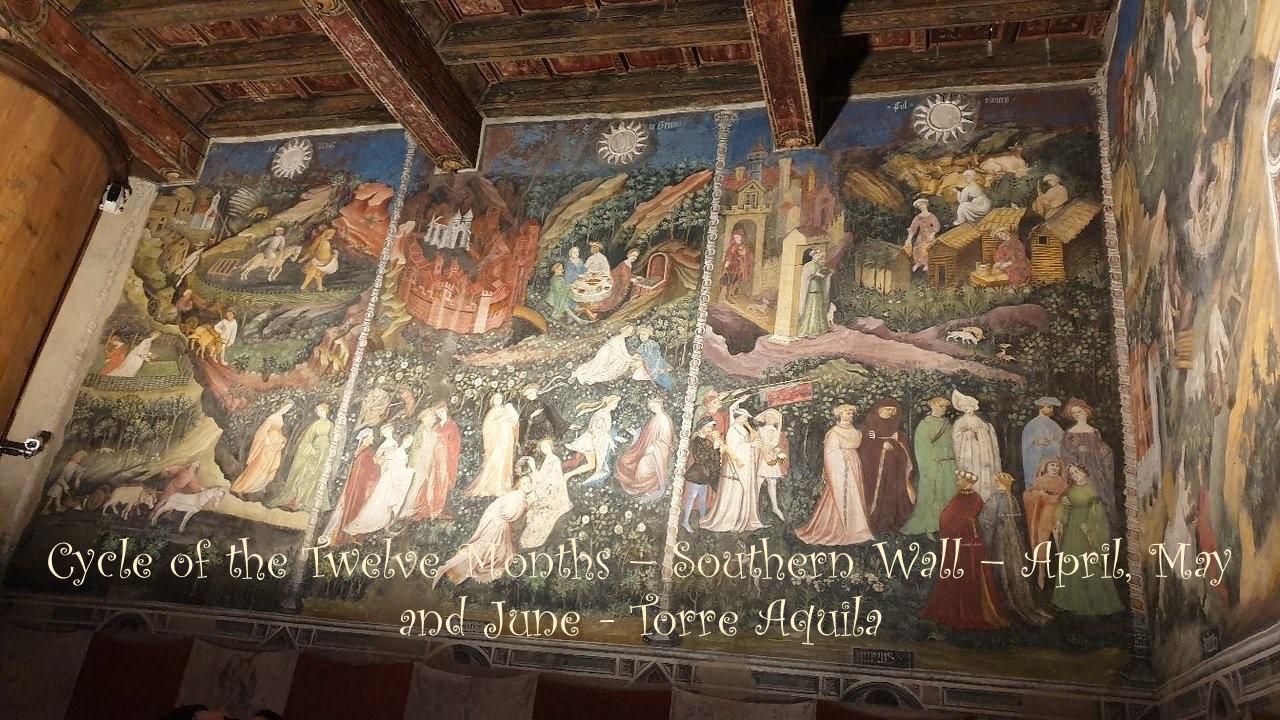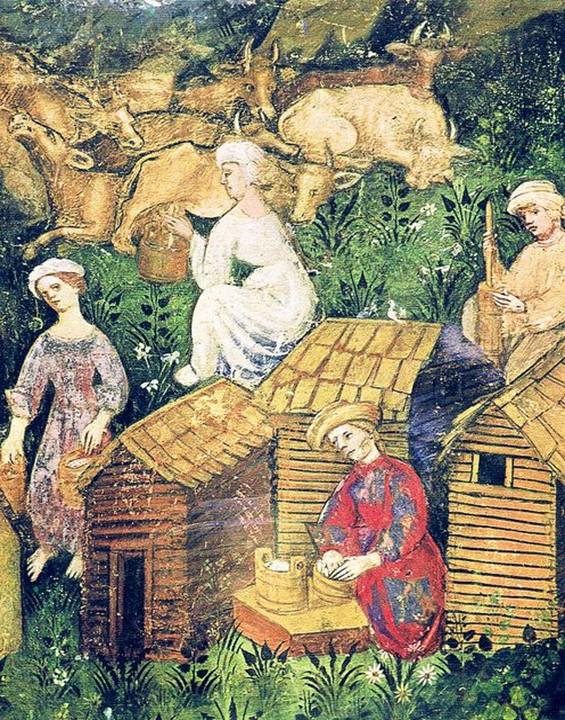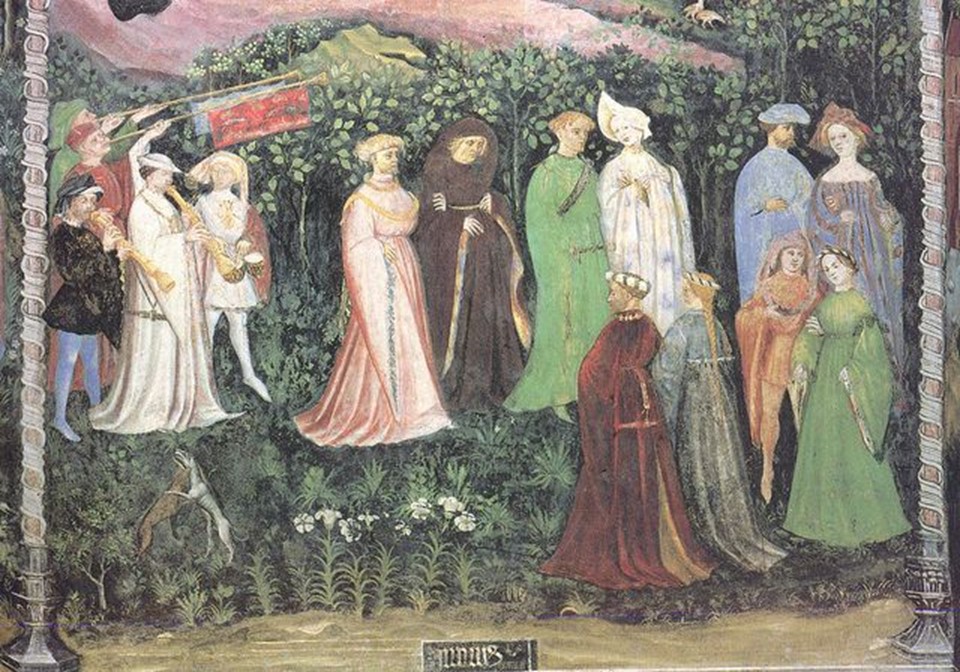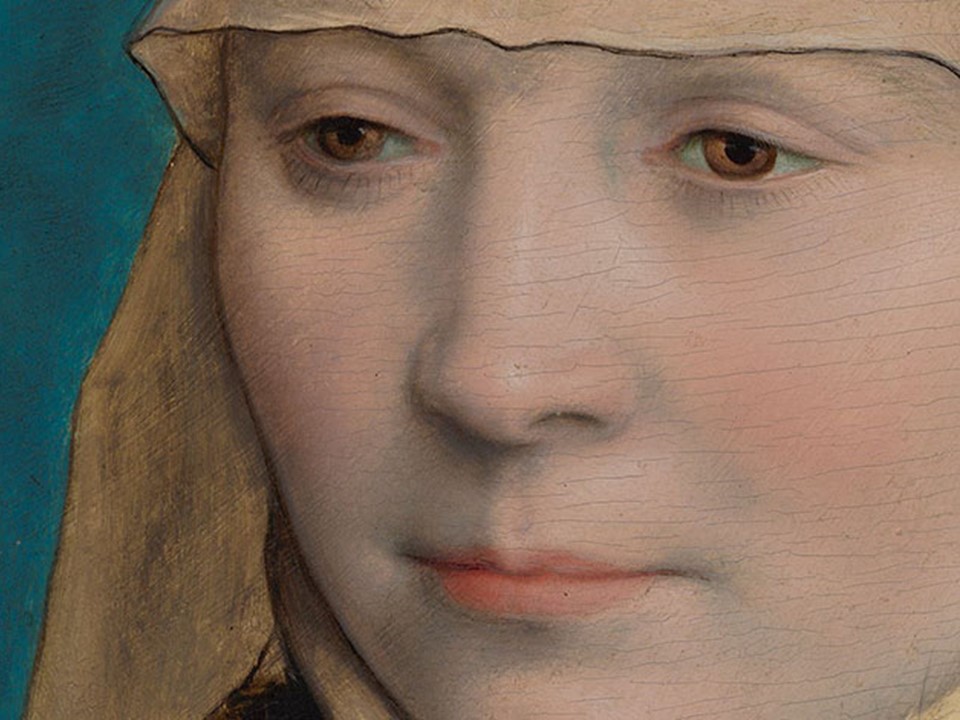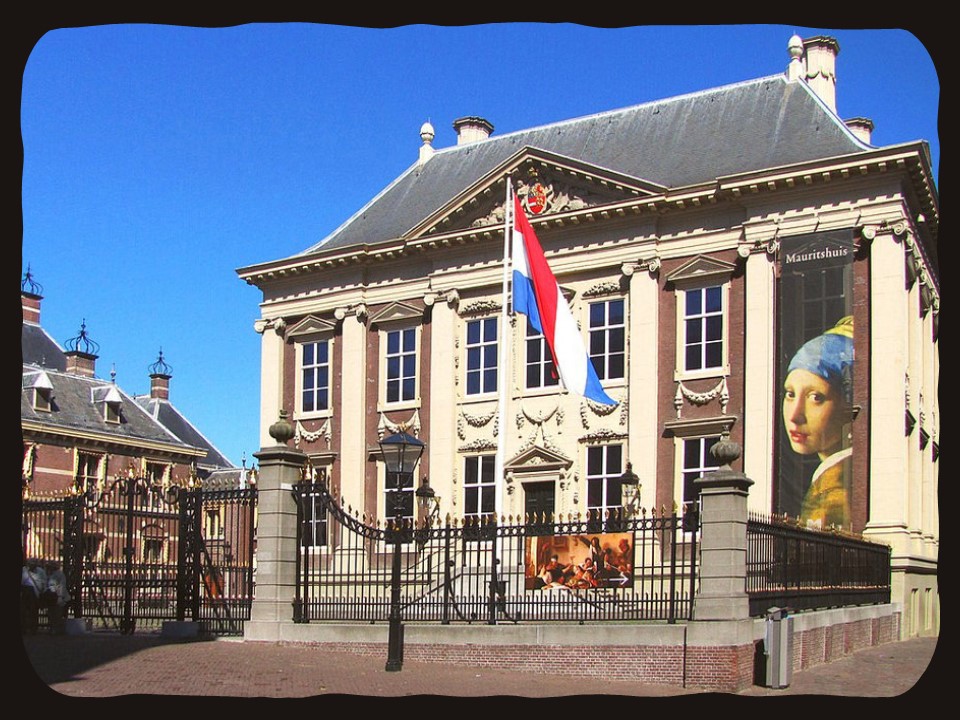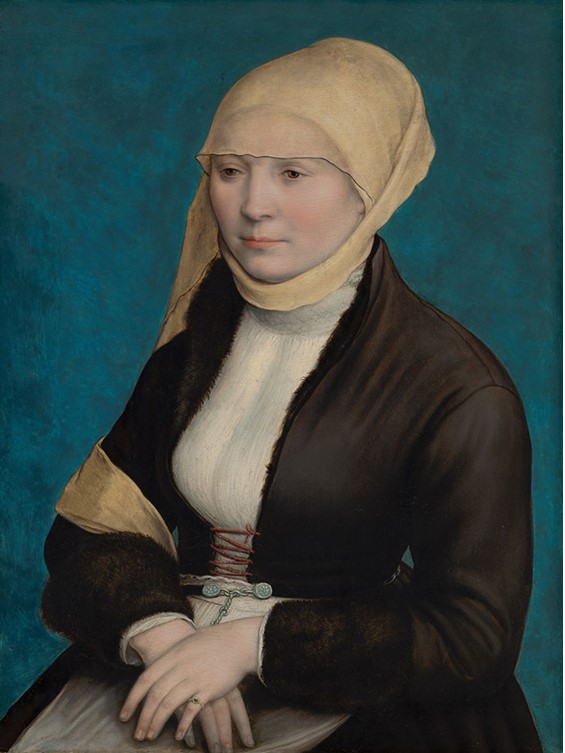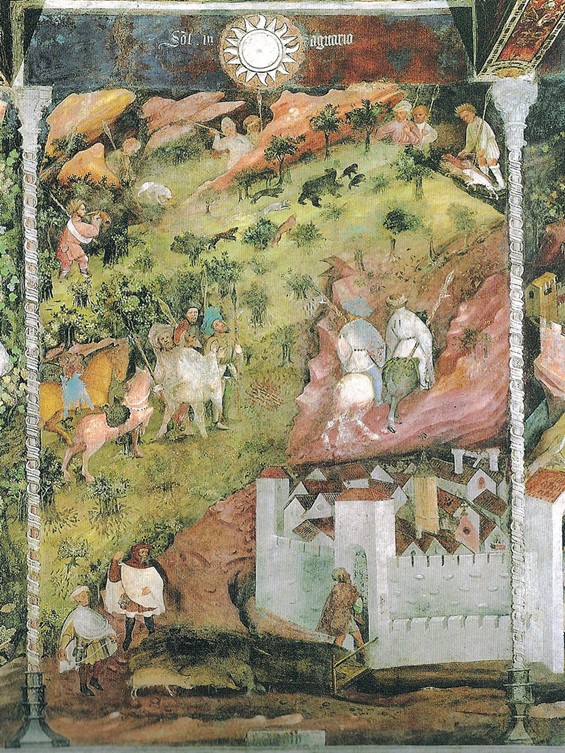
Yet one smile more, departing, distant sun! / One mellow smile through the soft vapoury air, / Ere, o’er the frozen earth, the loud winds ran, / Or snows are sifted o’er the meadows bare. / One smile on the brown hills and naked trees, / And the dark rocks whose summer wreaths are cast, / And the blue Gentian flower, that, in the breeze, / Nods lonely, of her beauteous race the last. / Yet a few sunny days, in which the bee / Shall murmur by the hedge that skim the way, / The cricket chirp upon the russet lea, / And man delight to linger in thy ray. / Yet one rich smile, and we will try to bear / The piercing winter frost, and winds, and darkened air. Wrote for The Month of November the American poet William Cullen Bryant… Hundreds of years earlier, another artist, Maestro Venceslao, decorated the walls of Torre Aquila in Trento, Italy, with paintings depicting the twelve months of the year. The Month of November is a striking example of his perception. https://www.youtube.com/watch?v=UJOCrB7zH4g
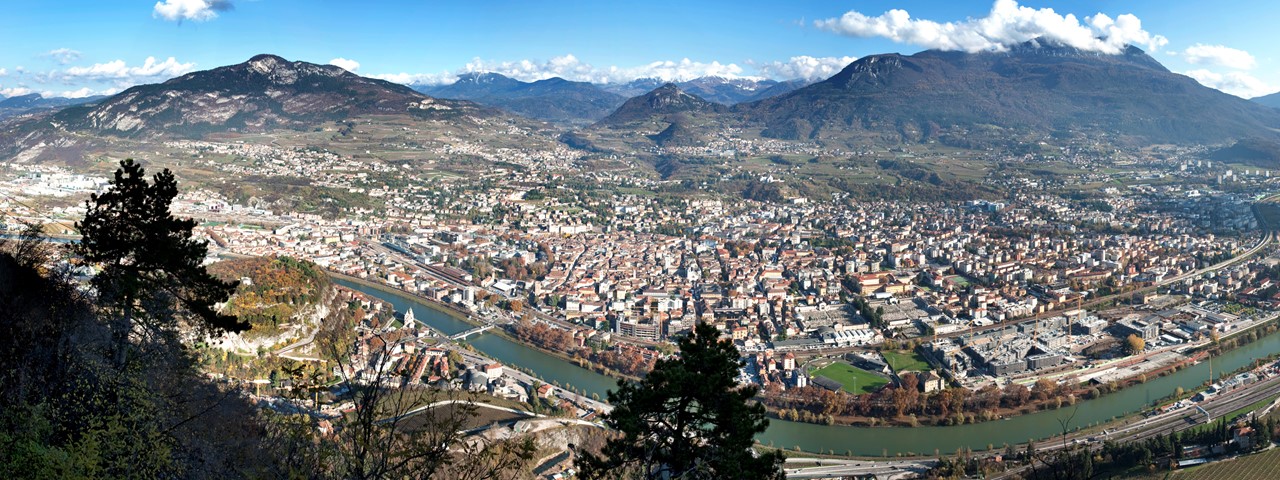
There is no way for the visitor of the beautiful Italian town of Trento to miss Castello del Buonconsiglio, this imposing, impressive and unique example of secular architecture! It is equally impossible for the Trento visitor not to explore the Castello, where, since the 13th century, the prince bishops of Trento resided and embellished with two Palazzos, an Italianate Park, a Gothic-Venetian Loggia and massive Towers.
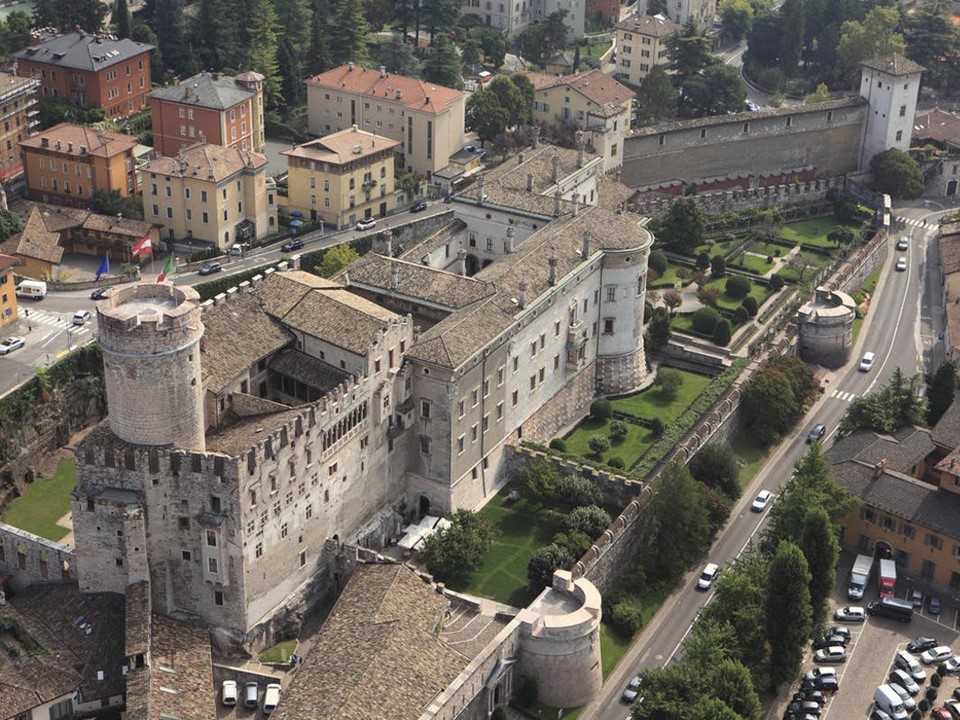
In 1973 the Castello became an Italian regional Museum of Art, known as Castello del Buonconsiglio Museum. This is where the Trento visitor can admire numerous art collections, ranging from paintings and manuscripts to period furniture and local archaeological finds. La piece-de-resistance among the Museum’s treasures is the so-called “Ciclo dei Mesi” in Torre Aquila. https://www.trentino.com/en/highlights/castles/castello-del-buonconsiglio/
“Ciclo dei Mesi” is a favourite theme in the arts of the Middle Ages and the Early Renaissance. Often linked to the signs of the Zodiac, the Cycle of the Months is often perceived as a link between the work of man, the seasons of the year and God’s ordering of the Universe. As a theme, it is recurred in sculptural decorations of cathedrals and churches across Europe, in illuminated manuscripts like the popular Books of Hours, palace frescoes and, rarely, panel paintings.
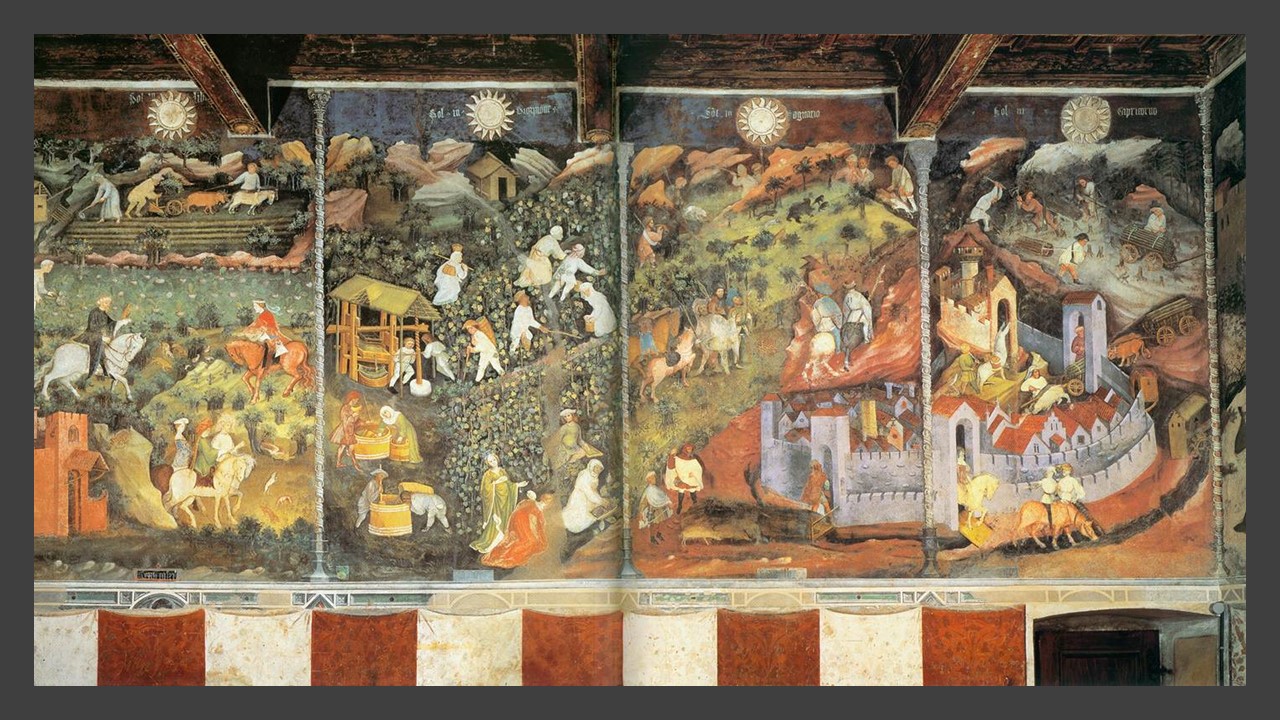
Trento’s November fresco panel at Torre Aquila is characteristic of Maestro Venceslao’s, the artist who painted the “Ciclo dei Mesi”, creative abilities. It is rich, colourful and informative. It tells us of how hard the Trentino farmers worked and how idle and pleasure-seeking its aristocrats were.
For Maestro Venceslao, November is a month dedicated to the leisures of the nobles and their favourite activity… hunting! The upper and middle parts of the November composition show groups of aristocrats accompanied by their servants chasing a bear with her young. The scene is colourful, full of energy and thunderous! The sound of the Hunting Horn, barking dogs, a crowd of tree-beater servants and galloping hunters move effortlessly among rocky mountains, fields and trees clad in autumnal colours.
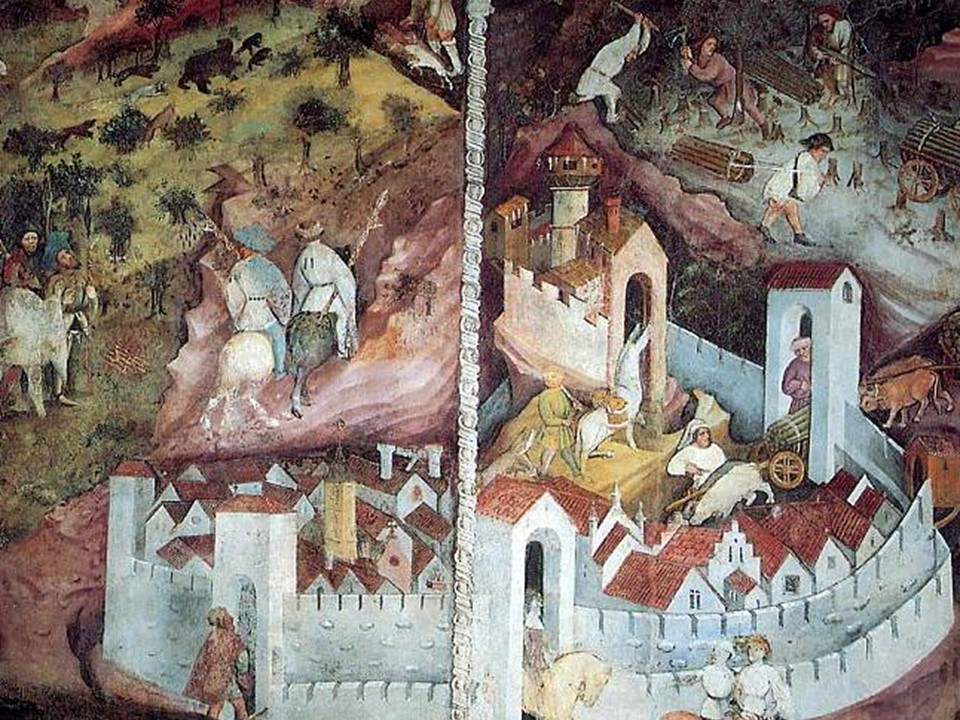
The fields however are deserted and the peasants, with winter approaching, have little outdoors activities to perform. They have suspended their jobs but remain vigilant guards of the countryside and support the aristocrats in any way possible. The activity is now concentrated at the gates of the cities, where, in view of the approaching bad season, peasants provide food supplies and the products of the countryside.
The lower part of the composition depicts the city of Trento… fairytale like, white walled, well-built, comfortable and warm with lots of chimneys and graced with the pointed bell tower of a church. Trento is a major city and the composition, interrupted by the slender column that divides the fresco scenes of November and December, continues with activities of peasants and professionals that are attention-grabbing to say the least…
For a Student Activity, please… Check HERE!
